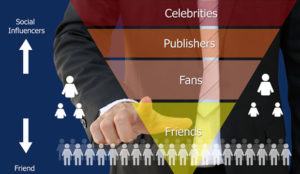
After giving a speech, I was asked a question that got me thinking. Many of you may be wondering about this too. AT&T and Comcast have two of the strongest brand names in the business — so why in the world are they both suddenly changing them? What are we, as customers and investors, not aware of?
AT&T’s new brand is “Rethink Possible” and Comcast’s is “Xfinity.” One is a brand remake, and the other is a master brand remake, which means changing the name and brand of the company in the consumer mind and marketplace. Over the years, I have worked with most of the competitors, and I have seen this happen before. Let me explain what is happening and whether it will work for both companies. I think my answer may surprise you.
First, a bit of history. One decade ago, some of the seven baby bells that are now AT&T, Verizon and Qwest (which is now merging with CenturyTel), started selling a television service called “Americast.” Imagine that, we thought, television from a phone company.
Writing on the Wall
The phone companies saw the writing on the wall back then. Americast put them into competition with the cable television companies, which at the time were many small companies. Then the baby bells started merging, so TV was put on hold.
Next, the cable television companies made their move. Seeing what the phone companies did, and after merging into fewer and larger companies like Comcast, Time Warner, Cox and Cablevision, they started offering VoIP telephone service over the Internet. That let them compete against the bells.
Recognizing that threat, phone companies recently started to offer their own IPTV television services, like AT&T U-verse and Verizon FiOS. After they ironed out the kinks in the first few months, the quality was excellent, and these services are becoming a real competitor to cable TV.
Then the cable television companies wanted to get into wireless and started reselling cellphones from Sprint. That was a flop. Next, they partnered with Sprint to bring Clearwire into existence, and now they sell a wireless Internet service.
So the new wave of competition in the marketplace has begun. The phone companies’ IPTV services and satellite television companies like DirecTV and DISH are competing with the cable television industry for the big all-or-nothing bundle.
It’s a battle for the whole consumer.
The space will change completely over the next several years, and this changing marketplace represents an incredible opportunity and threat for every competitor. The industry is turning into something very different — a place where every competitor offers everything, and where we choose one company and say goodbye to the rest.
This is the big battle we are watching unfold.
Making New Rules
I like what Comcast CEO Brian Roberts says when he talks about changing the company and the industry in customer’s mind and reaching out to them in new ways. He sounds like he understands the changing opportunities and threats to his business. He is trying to change the cable television side.
You may say competition seems healthy and strong, so why change the brand when things are so good?
To understand the reason you have to pull the camera back and look at the big-picture changes that are reshaping the industry. In the emerging new industry, these companies want to win the coming battle.
Customers, employees and investors don’t understand what is happening yet. They are confused, to put it mildly.
Going forward, each side will lose some customers, but each will enjoy increased earnings from those who remain and buy more services. The same thing is happening to phone companies, cable television companies and wireless companies.
This is a new marketplace where we choose one and say goodbye to the rest. That is the reason for this update in brand strategy.
The master brand today means many different things from 10 years ago, so this new thinking is correct. The question is how to bring the rest of the world up to speed.
The timing works better for some than for others. Let me explain.
First, realize the brand update taking place at AT&T and Comcast will likely occur at most competitors. This is just the start.
As with everything else — timing is key. AT&T and Comcast know the industry is changing, and they want to be first to create a new competitive framework in which they can lead. They figure other competitors will follow and play by the new rules they set up.
That’s their dream. That is the reason for the sudden launch of a rebranding war by these two companies.
However, to rebrand, timing has to be right — and at this point, timing looks better for AT&T than for Comcast, although the cable television company cannot wait.
Pushing a Boulder Uphill
Remember the comedian Lily Tomlin from the 1970s television show “Laugh-In”? She played Ernestine, the telephone company operator. She would say, “one-ringy-dingy, two-ringy-dingies, oh yes gracious me, to whom am I speaking?” Week after week, she would play on people’s disgust with their local phone companies’ full-of-themselves attitude. At that time, local phone companies had no competition, and the customer suffered.
However, since the early 1990s, the phone companies have reinvented themselves and built their new brand and have been continually improving the experience for customers. Because of that effort, they are now rewarded with a loyal customer base.
Now, cable television companies are starting to go through the same change.
In the mid 1990s, the “Seinfeld” television show had Kramer dealing with the cable company in the same way. He was upset with them not showing up, so when he set the next appointment for service, he never showed up, just to show them. That too was a comic way of relating to the way most customers in America feel.
During the last few years, cable television companies have seen competition coming, and they have finally been improving their service and repairing their image in the marketplace. They have made real progress.
We used to have to wait a week or two for a service call, then take the entire day off of work and sit around the house waiting. Today, they try and make an appointment for a specific time. Comcast even has television commercials saying how much they now care.
Comcast has realized the industry is changing, and it has to change with it in order to lead. It has started to make the right moves. However, customers don’t recognize improvements early on.
Changing the Comcast brand before the customer is ready to accept it is like pushing a boulder uphill. It is much slower and harder and may not work.
That is the difference between the two companies. I think AT&T and the phone companies in general have been doing this longer and have a better relationship with the customer and are pushing the brand-change boulder down the hill. Comcast and the cable television companies, on the other hand, are early in the process and are pushing uphill.
I would normally say the cable television companies should wait to change their brand. However if they do, they will miss this industry-changing opportunity to lead.
It is a tough position for Comcast to be in. The company itself caused the problem, however, by its treatment of the customer over the years. That needs to be improved on now. It simply takes time to change the mind of the customer.
So, like I said in answering the question after the speech, I would like to be wrong about this. Like everyone else, I want all competitors to be as successful as they can be as the industry continues to change. Healthy competition is good for customers, investors and workers.
However, it is important to swing the bat at just the right moment if you want to hit the ball out of the park. In today’s changing world, timing is everything — and that’s especially true for an industry undergoing transformation.
Jeff Kagan is an E-Commerce Times columnist and a wireless, telecom and technology analyst, author and consultant. Email him at [email protected].






















































































Social Media
See all Social Media